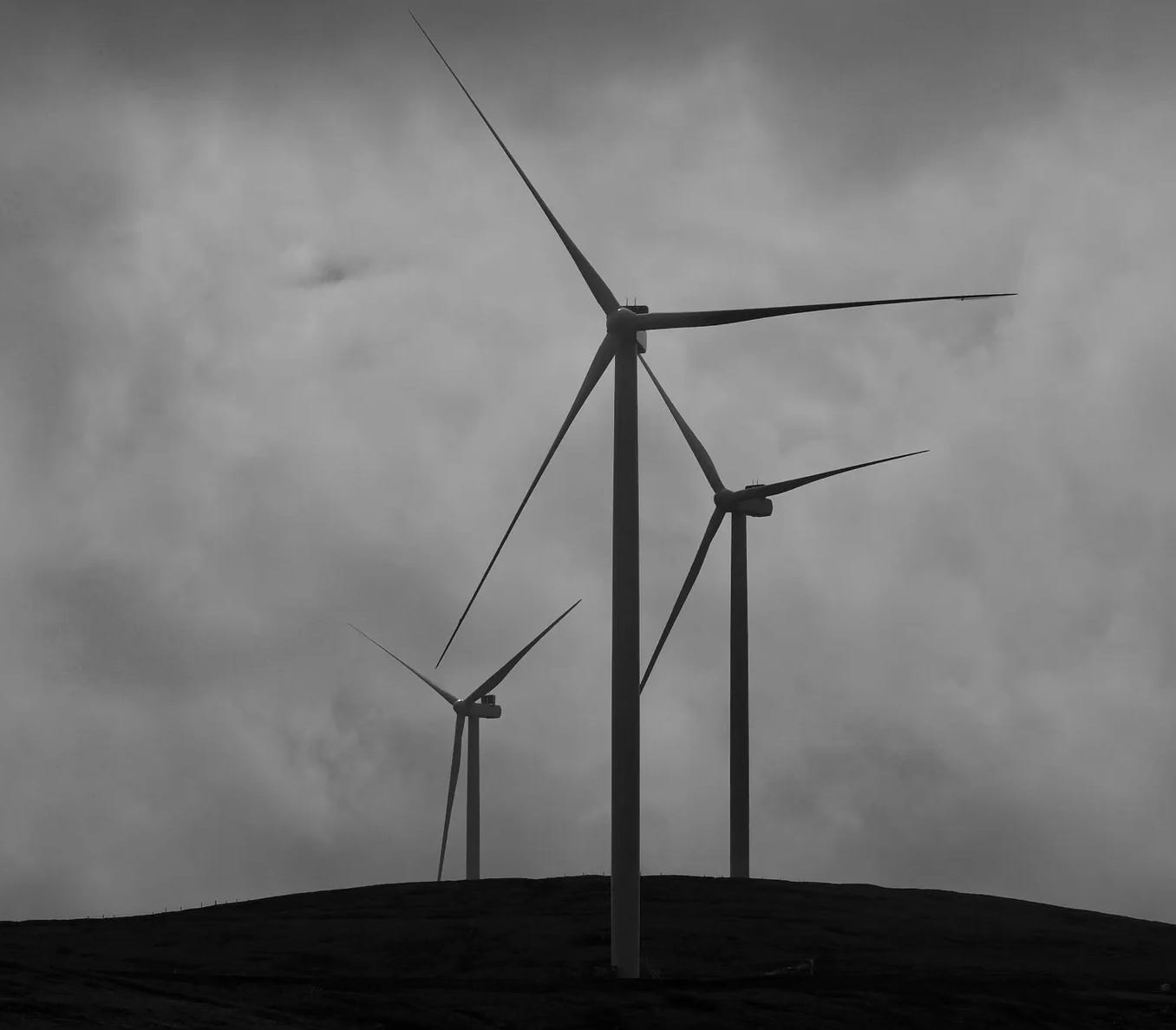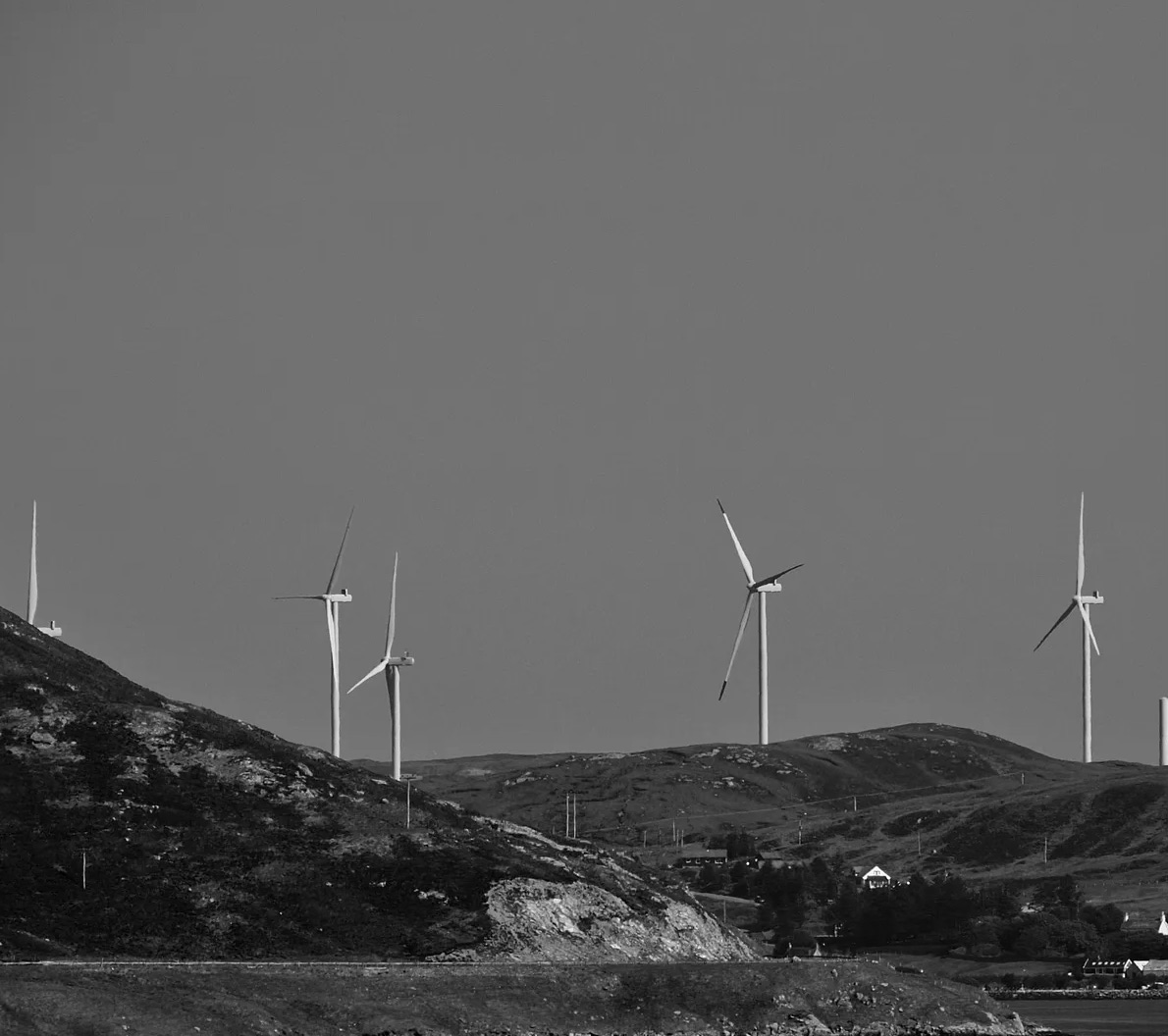
Discover more from Tom Morton's Beatcroft
Of windfarms and money
The giant Viking wind farm has begun operating in Shetland. Not everyone is happy. And where is the money going?
When I first moved to Shetland in 1986, there was one big experimental wind generator at Voe, towering above our house. I never saw its blades turn from the day I moved until its demolition. Now the hill it stood on is bare, but to the south, the skyline churns (as long as the wind is blowing, and it almost always is) with dozens of turbines, all vastly bigger than that solitary, stubbornly still edifice. This is the Viking Energy windfarm.
Scottish and Southern Energy have this week been celebrating the project’s completion. The great and the good have been entertained to dinner at the Lerwick Museum, speeches have been made, drinks served and journalists sobered up. Mostly.
But a tone-deaf media briefing from SSEN chief executive Alistair Phillips-Davies has alienated many islanders with its bullish insistence that this was just the start of wind farm developments in Shetland, that the paltry two-million a year Shetland Community Benefit Fund was actually pretty generous; that really, Shetland was being done an enormous favour. It felt colonial and patronising. Contemptuous.
A petition was immediately started to ask councillors, all of whom were invited to the gala SSEN dinner, to boycott the event. Over 660 signatures were gathered in a couple of days. There was a small demonstration outside the venue. For some islanders, the wind farm is a desecration of their -our - treasured landscape, one that has involved enormous disruption over the past two years and the shifting of vast amounts of peat. There have been peat slides, pollution of lochs and burns and a general feeling that Shetland is not being compensated adequately.
And I have to say, as windfarms go, this one is both large and unignorable. The turbines are huge, reaching 155 metres in height. The substation at Kergord is an enormous industrial building and the cabling associated with the project is mounted on extremely ugly wooden pylons.
As for the money, well. It could all have been very different. the original idea was for a community wind farm owned and operated by the council, who sought out partnership with SSEN. It could all, as one senior official told me a decade ago, have solved Shetland’s financial problems for decades to come.
I spoke to my old pal Drew Ratter, who was involved in the project from the council and Shetland Charitable Trust side from day one. You can listen to our Passing Place podcast here.
Not everyone will agree with or approve of Drew’s opinions, or mine, but there is information there which I think clears ups some of the muddy issues surrounding the project.
These include:
The fact that Shetland Charitable Trust still stands to make up to £3m a year for the next 25 years from Viking, despite having controversially given up the opportunity to invest in the project.
Landowners and crofting tenants with turbines on their land will all make large amounts of cash over the lifetime of the windfarm. That includes the Council itself, which through Busta Estates owns a great deal of the land concerned.
Money gained by Shetland Islands Council from the sale of its interest in the wind farm to Shetland Charitable Trust may have been used to help fund the new Anderson High School.
…and much more!
Speaking personally, I’m not a fan of the turbines (Drew is). They’re too close to several main roads. I find them intimidating, like giant mechanical triffids, and the effect on parts of the Shetland landscape I have known and loved for 40 years is hard to accept. I wrote this last year, as the construction work neared completion. Nevertheless I accept that climate change is a crisis that must be addressed and that we in Shetland have to play our part. I’m just not sure that the price we have paid and will continue to pay is really worth it. The revelation last week that SSEN were being paid NOT to operate turbines while folk in Shetland suffered fuel poverty (fires and central heating already on this week in the isles) was infuriating.
Have a listen to the podcast and see what you think.
Oh, and for the record, I didn't go to the celebratory SSEN dinner. But I accept that maybe I should have, if only to have serious words with Alistair Phillips-Davies.
Subscribe to Tom Morton's Beatcroft
Life on a Scottish island and how not to live it. Ayrshire, Glasgow, music, motorcycles, food and whisky. Bits of books. Dogs, religion, art, golf, photography. Words galore, mostly written, sometimes spoken.














I will listen to the podcast, of course. In the meantime, I should say that I object to the giant turbines less than I do the ghastly lines of wooden pylons you mention. On my recent visit I was shocked by how badly they seemed to litter, and thus diminish, the landscape, none having been present when I came the year before.
Perhaps you could invite him to have a conversation for your Substack?